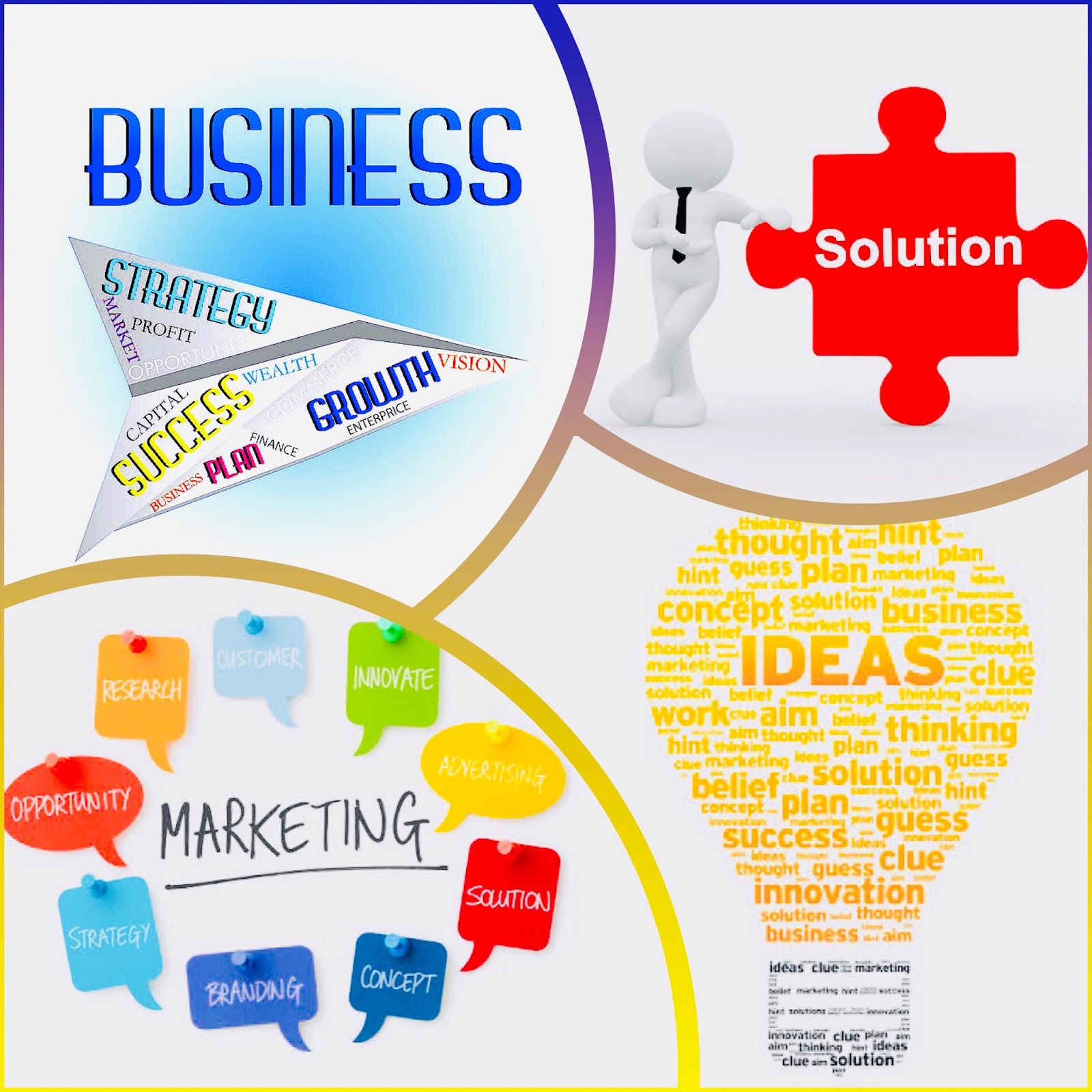
Starting a business is hard work. So if you've got that far, you should give yourself a pat on the back. Some say however, that marketing a small business is even harder. So, the good news is is that there are some great free marketing ideas for small businesses. Here are my top 3.
1. Free Marketing Ideas for Small Businesses
Online.
Get a website and promote it. If you're not
already online you need to be, whatever your business. Now, getting a website
isn't exactly free but it's a great deal cheaper than it used to be and simple
enough for absolutely anyone to do it. Once you have website you can drive free
traffic to it with article marketing which is a great, effective and simple way
to get customers to your site and is one of the best free marketing ideas for
small businesses.
Join forums. Forums are filled with people who
need a solution to their problem. If you have it, tell them and add your site
to the resource box.
2. Free Marketing Ideas for Small Businesses
Offline.
Free marketing ideas for small businesses work
offline too but are often neglected. Offline marketing techniques are great for
businesses offer services in a particular region. Promote with flyers by
dropping door to door or asking local stores to keep some on the counter for
you.
Reward Existing Customers: Contact your customer
base with a special offer or discount for existing customers only. It will make
them feel special and nudge them into thinking about whether they need anything
from you. Chances are they do and they needed reminding. They should also be
encouraged to refer other customers. Offer a discount when they use you next.
Treat New Customers: Offer new customers a good
introductory discount or a free gift for giving you a try. They can also
benefit from referring friends.
3. Get out more.
I once asked a successful small business owner
what the key to his incredible success was. Know what he said? Golf. He'd never
played but joined a club that was full of his target audience and made so many
contacts that his order books were jammed within months. I'm not suggesting you
join a golf club but getting to know people in your community will be
invaluable for your success.
In conclusion, my top 3 free marketing ideas for
small businesses are just the beginning. Marketing is hard work but done
properly will bring amazing results. One final thought: Training so that you
are doing things right first time will save you thousands of dollars and make
you thousands of dollars. Good luck.
Business Requirement: An Innovative Business Solution
Primarily, a business requirement is indeed
necessary in any businesses. Such business requirements document or also known
as the BRD is classified as a great innovative and alternative business
solution for any business projects. These sets of projects may include many
processes such as the documentation of customer needs and expectations, project
management and implementation, and a lot more.
Creating your own business or software
requirements may seem to be a critical activity. Thus, this must be performed
and administered accordingly to achieve and obtain your business organizational
objectives, goals while you all move forward towards an independent solution on
a specific business procedural system.
Any business entity must take initiatives to
modify and develop existing products or services that they offer. More so, they
also have to be willing to introduce new devices, products, services, both
software and hardware so as to expand their market and open new horizons as
well as avenues for more profit and revenues. Hence, when such development is
done, a new business requirement document must be created and introduced.
A particular business requirement document or BRD
has many common objectives. Some of them are the following:
a. Gaining concrete contract, agreement or mutual
understanding between and among stakeholders.
b. Creating a solid foundation to be able to
communicate using innovations towards such a service provider, a program or a
technological system.
c. Addressing the issues and other matters on how
to meet and satisfy customers' and business' needs and demands.
d. Providing necessary inputs into the next phase
for such relevant project.
e. Describing the possible ways on how the
customer or business needs will be met by the innovating and finalizing
business solutions.
Truly, the business requirement document or BRD
is referred to by many business experts, entrepreneurs and business enthusiasts
as the ultimate foundation for all subsequent project deliverables, relating
what inputs and outputs are connected with each process function.
Distinguishing between the business solution and the technical solution, the
BRD shall be addressing or answering the questions on business capabilities,
plans, programs, and involvements.
Creating or putting up a team or a pool of
experts such as computer programmers may seem to be a good idea. This lessens
the workloads and simplifies everything; thus, it tends to prioritize and
observe quality, effectiveness and efficiency. Coming up with consistent,
reliable and accurate inputs, processes and outputs, business requirement will
surely work at its best - advantageous for you and your business.
Business requirement programmers, analysts and
experts should always consider the technical and contextual aspects of the
documents or specifications. Also considered as business models and paradigms,
these BRDs include detailed descriptions, summaries and other information that
you and your market need to know and familiarize. Diagrams, charts and other
means of representations may also be useful to maximize resources and for easy
understanding.
Tagged as a mere foundation and ultimate
framework of the business' development programs and new projects, business
requirement may also involve and include some updates and changes in working
activities and practices.
Small Business Marketing Ideas: Marketing Strategies to Convert Leads to Sales
The art of marketing for a small business is not
just getting tons of leads, but also converting leads to sales. A business with
lots of leads and no sales, is soon out of business.
Over the years, I have discovered several very
effective techniques to converting leads into sales for a small business. Let
me share with you a handful of these. To make them easier to digest, I have
broken them into two categories: lowering barriers and increased marketing.
LOWER BARRIERS.
This means remove the walls that stop your clients from buying. Each
business will be a little different, but here are some of the most effective
ways to remove the barriers to purchasing:
- Give a Guarantee
- Payment Plans
- Testimonials
- 3rd Party Documentation
- Competitive Pricing
- Increased Expertise
- Increased Value in your product
- Samples
INCREASED
MARKETING.
- Compelling Call to Action. Having an offer is not enough, offer something they can not resist. Beware though, don't make it too good to be true.
- Unique offering. The more unique your offering is, the harder it is to compare to others and less competition you have.
- Niche Marketing. When marketing to a specific group, like real estate agents, you can quickly separate yourself from all others effectively reducing your competition and making you the only option.
- Effective Follow up campaigns. Most people do not buy on their first exposure. Without an effective follow up campaign you can find yourself having very low conversion of leads to clients. Using an email campaign or postcards to follow up can drastically increase your conversion of contacts to clients.
- Scripts. Using a script for incoming calls, sales calls, common questions, will standardize your business and increase your conversion. This will assure each clients gets the same treatment regardless of the person handling the client.
- Consultative Selling. When talking with a contact, asking questions and understanding their pain will drastically increase your conversion. Today's consumer wants more than to just buy a service, they want a consultant to help them make good decisions. Ask questions before offering solutions.
- Use more emotion. People buy emotionally and justify logically. Help your clients consider how it will feel once they have their problem solved. Use emotional words like, "Won't you be relieved once this problem is resolved?" This helps them to feel better and creates an emotional satisfaction for your client that they can look forward to once you have helped them resolve their problem.
- Enroll vs Close approach. Since most customers need 5-7 exposures to your product before they are ready to buy, consider your marketing an enrollment process. Help them get educated about your process and then enroll them into purchasing, especially if it is a larger ticket item.
- Sort Prospects. When talking to a contact, decide if this person is ready to purchase, needs more time / information or is not interested at all. This can be the hardest of all strategies. This comes from know what the buying signs are of your clients. When they are showing buying signs, move them to the buying phase. If they are still pondering, enroll them. If they are really not interested, give them space and time and see what happens.
To get the best conversion, start by adding a few
of these strategies to your current marketing mix and monitor your marketing
numbers. Track your sales and if your overall conversion of contacts to sales
is increased, stays the same, or is decreased.
By using a few of these marketing ideas for your
small business you can see an increase in conversion from leads to sales.

